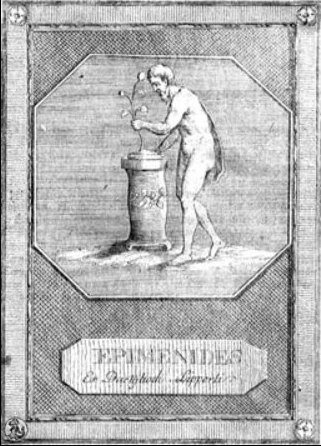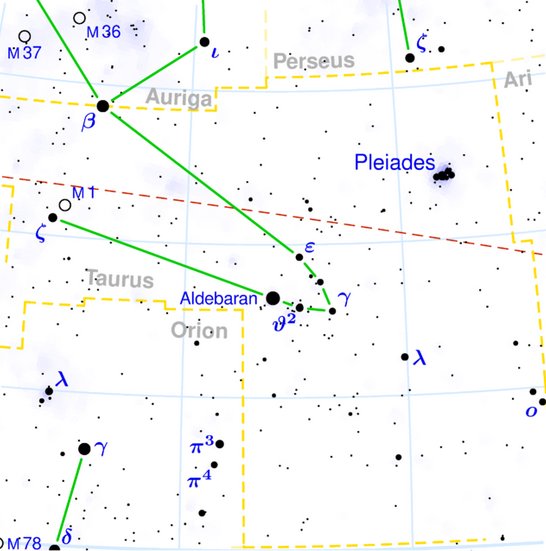481. Once again. We are on the track of the koti glyphs in the C text and in overview their measures seem to be well ordered:
In particular we have found the 1st koti in the text to be 9 * 7 = 63 right ascension days after Sirrah in Andromeda, i.e. where (at the time of rongorongo) Hyadum I (γ Tauri) rose with the Sun:
The 2nd koti was located at the Heart of the Serpent (Cor Serpentis), which came 237 right ascension days after Sirrah. Like γ Tauri (Hyadum I) this was a point of origin (origo, zero), viz. of the 2nd half of 16 * 29½ = 472 right ascension days (equal to the number of glyph positions on the G tablet).
Half π (= 157) suggests a quarter of a circle and this measure (to be counted from 8 * 29½ = 236) equals 100 + 57, perhaps referring to how Epimenides was awake for 100 years and then slept for 57 years inside a cave: ... The original story was by Diogenes Laertius, an Epicurean philosopher circa early half third century, in his book On the Lives, Opinions, and Sayings of Famous Philosophers. The story is in Chapter ten in his section on the Seven Sages, who were the precursors to the first philosophers. The sage was Epimenides. Apparently Epimenides went to sleep in a cave for fifty-seven years. But unfortunately, 'he became old in as many days as he had slept years'. Although according to the different sources that Diogenes relates, Epimenides lived to be one hundred and fifty-seven years, two hundred and ninety-nine years, or one hundred and fifty-four years. A similar story is told of the Seven Sleepers of Ephesus, Christian saints who fall asleep in a cave while avoiding Roman persecution, and awake more than a century later to find that Christianity has become the religion of the Empire ... Metoro may have expressed this idea when he said kua moe 48 weeks (= 4 * 84 days) after Sirrah. Because from there to the First Point of Aries (Sheratan), rising with the Sun in April 17 (107 = 472 - 365) at the beginning of side b, there were 393 - 336 = 57 days ('years').
 We can see Epimenides as a planter in the picture above (with Sun symbols in 3 of the 4 corners) and then we will remember how the planter Kuukuu according to Manuscript E had been carried down into a cave, mortally wounded:
... They all sat down and rested [on the plain of Oromanga], when suddenly they saw that a turtle had reached the shore and had crawled up on the beach. He [Ira] looked at it and said, 'Hey, you! The turtle has come on land!' He said, 'Let's go! Let's go back to the shore.' They all went to pick up the turtle. Ira was the first one to try to lift the turtle - but she didn't move. Then Raparenga said, 'You do not have the necessary ability. Get out of my way so that I can have a try!' Raparenga stepped up and tried to lift the turtle - but Raparenga could not move her. Now you spoke, Kuukuu: 'You don't have the necessary ability, but I shall move this turtle. Get out of my way!' Kuukuu stepped up, picked up the turtle, using all his strength. After he had lifted the turtle a little bit, he pushed her up farther. No sooner had he pushed her up and lifted her completely off the ground when she struck Kuukuu with one fin. She struck downward and broke Kuukuu's spine.The turtle got up, went back into the (sea) water, and swam away. All the kinsmen spoke to you (i.e. Kuukuu): 'Even you did not prevail against the turtle!' They put the injured Kuukuu on a stretcher and carried him inland. They prepared a soft bed for him in the cave and let him rest there. They stayed there, rested, and lamented the severely injured Kuukuu. Kuukuu said, 'Promise me, my friends, that you will not abandon me!' They all replied, 'We could never abandon you!' They stayed there twenty-seven [27] days in Oromanga. Everytime Kuukuu asked, 'Where are you, friends?' they immediately replied in one voice, 'Here we are!' They all sat down and thought. They had an idea and Ira spoke, 'Hey, you! Bring the round stones (from the shore) and pile them into six heaps of stones!' One of the youths said to Ira, 'Why do we want heaps of stone?' Ira replied, 'So that we can all ask the stones to do something.' They took (the material) for the stone heaps (pipi horeko) and piled up six heaps of stone at the outer edge of the cave. Then they all said to the stone heaps, 'Whenever he calls, whenever he calls for us, let your voices rush (to him) instead of the six (of us) (i.e., the six stone heaps are supposed to be substitutes for the youths). They all drew back to profit (from the deception) (? ki honui) and listened. A short while later, Kuukuu called. As soon as he had asked, 'Where are you?' the voices of the stone heaps replied, 'Here we are!' All (the youths) said, 'Hey, you! That was well done!' ... ... I have guessed place names on Easter Island were iterated in Manuscript E at their correct positions as determined by the Full Moon - whose face was reflecting the positions of the Sun half a year away (i.e. among the heliacal stars):
Searching for the beginning of Oromanga in the C text we will find this place will correspond to Dubhe (α) in Ursa Major (Itzam-Yeh, Seven-Macaw).
"Dubh, more generally Dubhe, the Bear, is the abbreviation of the Arabians' Thahr al Dubb Al Akbar, the Back of the Greater Bear, Dubb being first found in the Alfonsine Tables. Al Bīrūnī said that it was the Hindu Kratu, the Rishi or Sage." (Allen) |
|||||||||||||||||||||||||||||||||||||||||||||||||||||||||||||||||||||||||||||||||||||||||||||||||||||||


